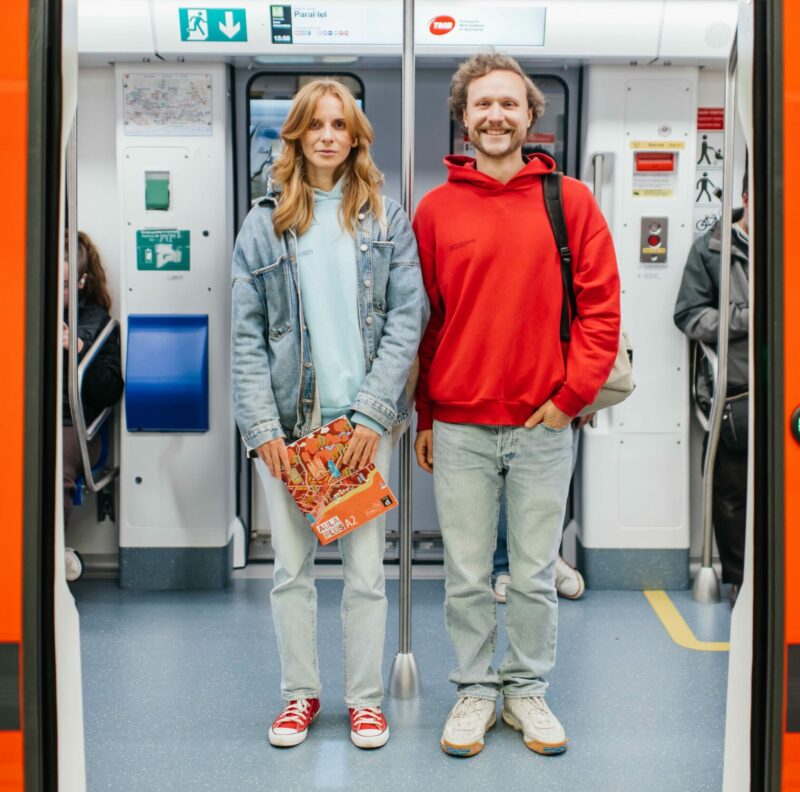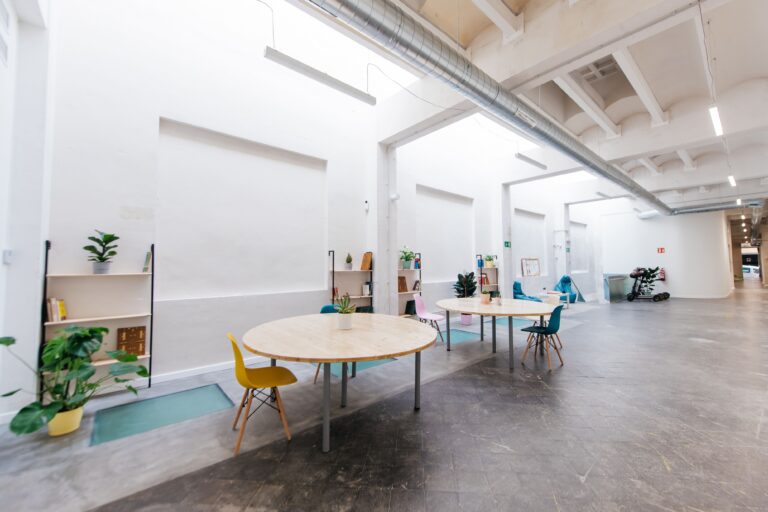
Barcelona’s public transport system is renowned for its efficiency and extensive coverage, making it an ideal choice for both newcomers and residents. The city’s network includes metro lines, buses, trams, commuter trains, and bike-sharing options, ensuring easy and affordable access to all areas. This well-integrated system not only reduces traffic congestion and pollution but also offers a convenient and eco-friendly way to explore the vibrant city.
The Services
Metro
The metro network in Barcelona consists of eight different lines, allowing you to get around the city easily and without stress. It is made up of 165 stations, and at peak times, as many as 167 trains travel through the tunnel system.
Barcelona’s metro system operates with convenient hours to accommodate the city’s dynamic lifestyle. From Monday to Thursday, the metro runs from 5 AM to midnight, extending its service on Fridays and the eve of public holidays until 2 AM. On Saturdays, the metro operates 24 hours, providing uninterrupted access across the city. Sunday service runs until midnight, ensuring comprehensive coverage throughout the week. These extensive operating hours make the metro a reliable and accessible option for both daily commutes and late-night travel.
Barcelona’s metro system features several key stations that serve as important hubs for commuters and travelers. Plaça de Catalunya, located in the heart of the city, connects multiple metro lines and provides access to major shopping areas, La Rambla, and various cultural attractions. Sants Estació, the city’s main train station, links the metro with national and international rail services, making it a crucial transit point for long-distance travelers. Diagonal station is situated in the upscale Eixample district, offering easy access to Passeig de Gràcia, one of Barcelona’s most famous streets, known for its modernist architecture and luxury boutiques. Passeig de Gràcia station, another vital point in the city center, connects several metro lines and offers direct access to landmarks such as Casa Batlló and La Pedrera. Barceloneta station, located near the beach, is perfect for those heading to the waterfront or enjoying Barcelona’s maritime atmosphere. Lastly, Tibidabo station serves the area near the Tibidabo amusement park and the scenic overlooks of the city, making it key for tourists and locals alike. These stations are essential for navigating the city efficiently and accessing Barcelona’s diverse attractions and neighborhoods.
Bus
Wherever you go in Barcelona, you will always come across a bus station, due to the extensive bus network in the city. Traveling by bus is not only convenient, but also a very efficient way to get around. But there are not only conventional bus routes that cover the whole of Barcelona. There are also tourist buses and the Barcelona Night Bus, which offer a spectacular view of the city’s most special places. Further, there are also so-called “Buses on Demand“, which have fixed stops and times, but the routes are generated based on requests from other users with similar needs.
TRAM
The TRAM in Barcelona is an efficient and modern light rail system that enhances the city’s public transport network. It consists of two main networks, Trambaix and Trambesòs, encompassing six lines. These lines collectively cover over 50 stops, connecting key areas within the city and its outskirts. The TRAM provides seamless connectivity to major districts, business centers, and residential areas, complementing the metro and bus systems. It is particularly beneficial for reaching neighborhoods not directly served by the metro, ensuring comprehensive urban mobility for all users.
Bicing
Bicing is the regional bike rental service of Barcelona and there are over 500 stations where you can pick up either a mechanical or electric bike. To get started, simply create an account on Smou and download the app. For more information, please visit https://www.bicing.barcelona/alta-smou#.
Renfe Rodalies
Barcelona’s suburban train services, known as Rodalies, play a crucial role in connecting the city to other parts of Catalonia. Operated by Renfe, Rodalies comprises several lines that link Barcelona with surrounding towns and cities, facilitating easy commuting and travel across the region. Key lines include the R1, R2, R3, R4, R7, and R8, each serving different routes and destinations.
These suburban services extend to important Catalonian cities such as Girona, Tarragona, and Lleida, as well as coastal areas like Sitges and Mataró. The Rodalies network not only supports daily commutes but also provides convenient options for weekend trips and tourism within Catalonia, enhancing the overall connectivity and accessibility of the region.
Ticket Usage Time
A special feature of public transport in Barcelona is the integrated fare system, which allows anyone to travel from A to B with just one ticket, no matter how many different means of transport they use. This pricing structure allows you to pay a single fee and then travel within the designated zones for a limited time. This feature makes public transportation more attractive by making commuting more flexible and less expensive.
Types of Tickets

Barcelona offers a variety of public transportation tickets to suit different needs. The most popular options are as follows:
- Single Tickets: Recommended for those who do not travel a lot.
- T-Casual: This ticket allows you to make 10 journeys. Recommended for occasional users.
- T-Usual: This ticket enables you to use the public transport system for one month.
- T-Jove: This ticket is only available for people under the age of 30 and is valid for three months.
- Day Passes: Recommended for tourists staying in Barcelona from one to five days.
All tickets can be purchased online or directly at the stations from vending machines.
Barcelona’s public transport system is a vital asset for both residents and visitors, offering a reliable, efficient, and sustainable means of navigating this vibrant city. With an extensive network of buses, trams, metros, and trains, it provides easy access to the city’s diverse neighborhoods, cultural landmarks, and scenic attractions. For students and newcomers to Barcelona, mastering the public transport system can significantly enhance their experience, making daily commutes more convenient and affordable. As a language school, we encourage our students to explore Barcelona’s public transport options, not only as a practical necessity but also as an enriching way to immerse themselves in local culture and language. By embracing this eco-friendly mode of travel, we can all contribute to a more sustainable future while enjoying the rich tapestry of experiences Barcelona has to offer.


























